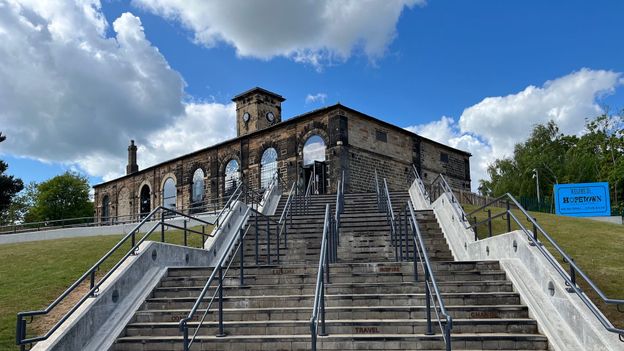
Two hundred years ago, Shildon in north-east England changed the way we travel forever – and its legacy shaped rail networks around the globe.
“Would you just look at that?” said Niccy Hallifax, eyes smiling behind chunky designer glasses. “So much history and nostalgia – even if you’re not a trainspotter.”
We were standing before Europe’s largest collection of historic rail vehicles at Locomotion, a railway museum in Shildon in County Durham, north-east England. Up close, the colliery engines, wood-lagged locomotives and gleaming apple-green railroad cars seemed to transport us into a distant past. That nostalgia was also evident in the vast array of steam trains, freight vehicles, trolleys and wagons – all hallmarks of Shildon, the world’s first railway town.
There are many reasons to visit Locomotion, but this year the museum is also part of a milestone in rail history. Two hundred years ago, Shildon was the first place in the world to witness a steam locomotive hauling passengers on a public railway when the Stockton and Darlington Railway first clanked into motion on 27 September 1825. Now, this industrial heartland is the focal point of a nationwide celebration of the birth of the modern railway, when Britain changed how the world travelled forever.
“Given Shildon’s global influence, it’s a shame its story has been forgotten,” said Hallifax, director of S&DR200, a multi-arts festival celebrating the region’s epoch-defining history. “This is Britain’s ‘cradle of the railways’, and what happened affected everyone here. The railways employed entire communities. Then locals went to war on the trains they built. These are the narratives we want to tell the world about. Shildon’s is a story about railways, but it’s also one about people.”




